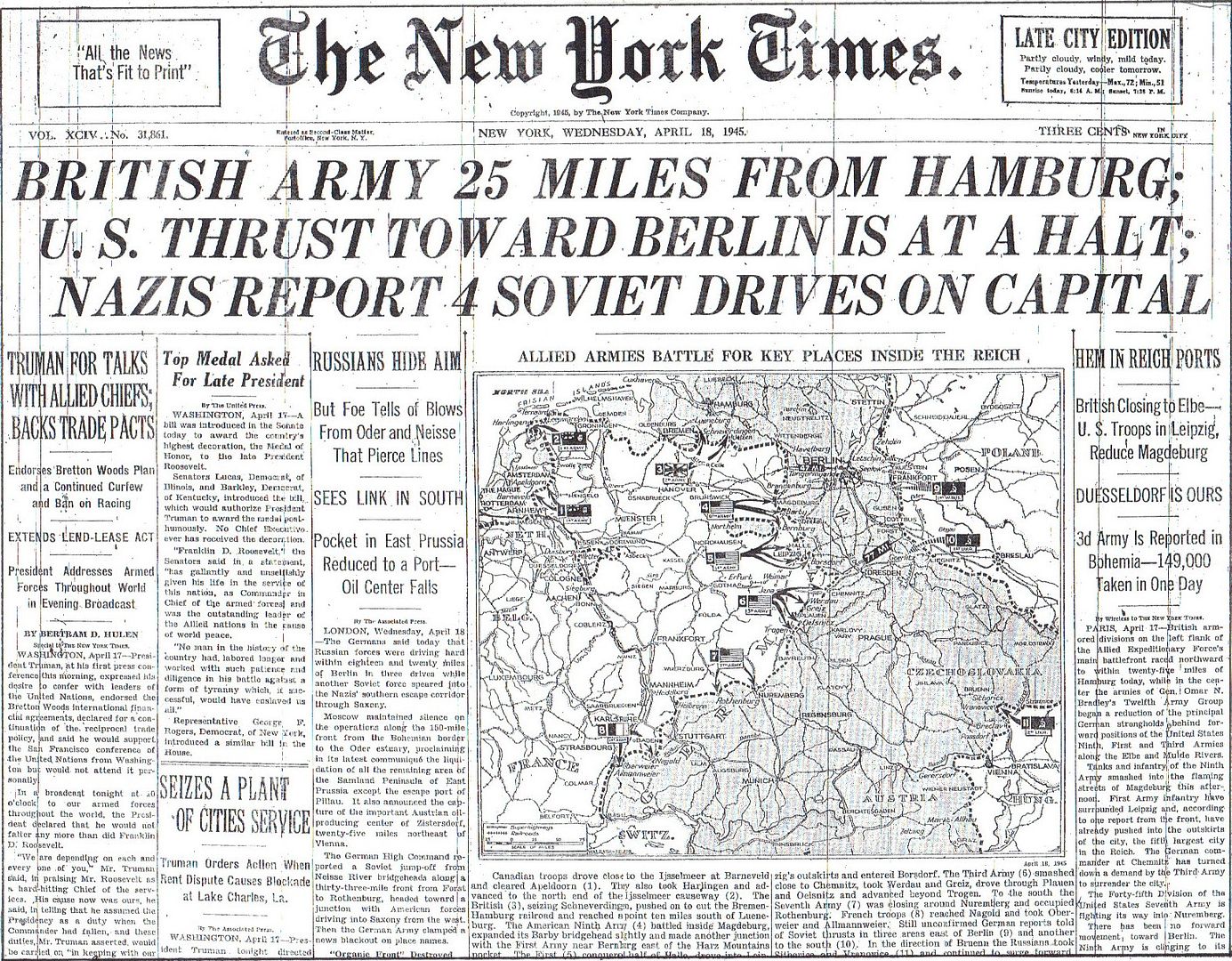
Posted on 04/18/2015 4:52:19 AM PDT by Homer_J_Simpson

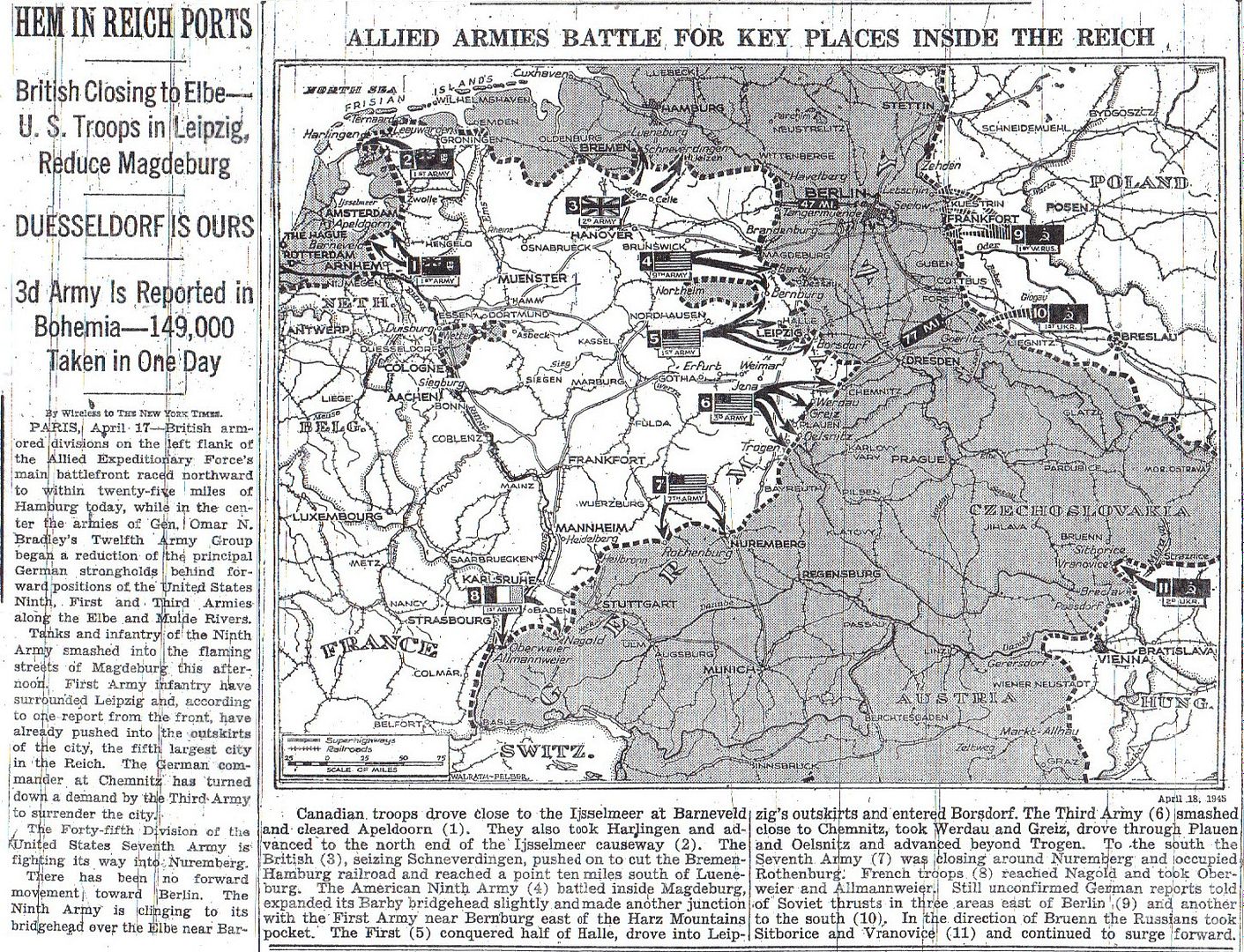
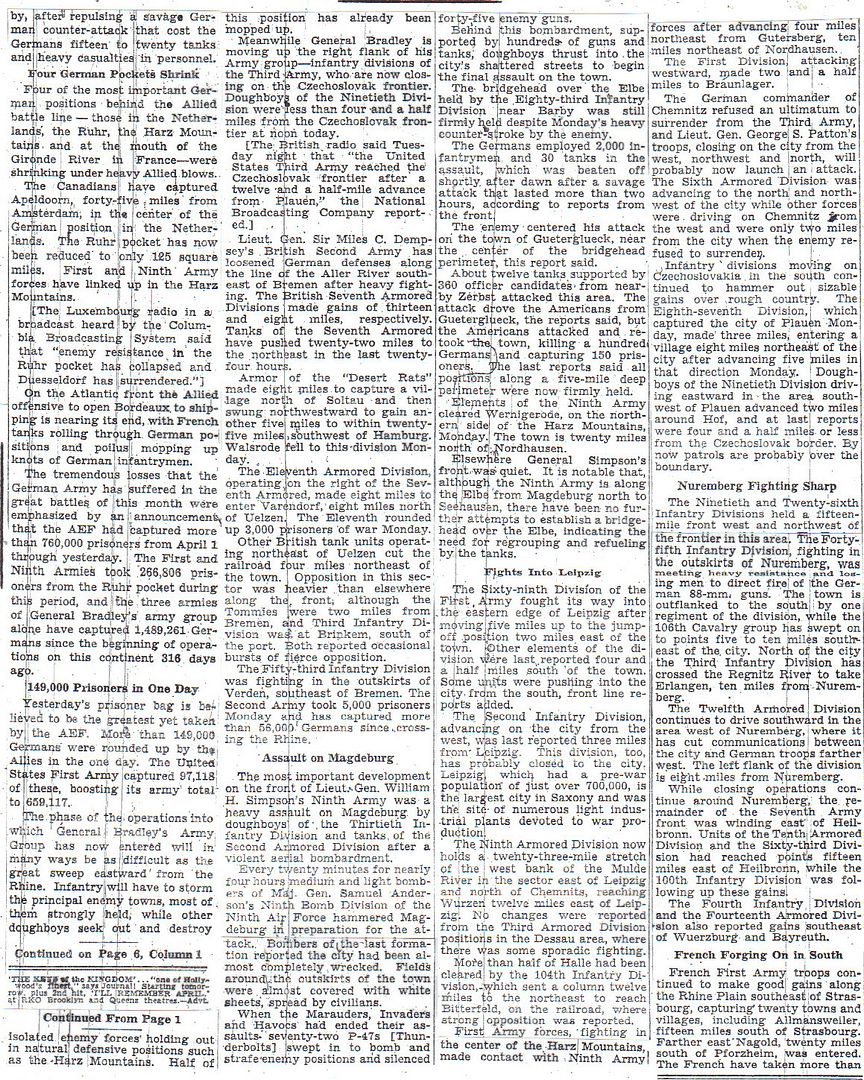
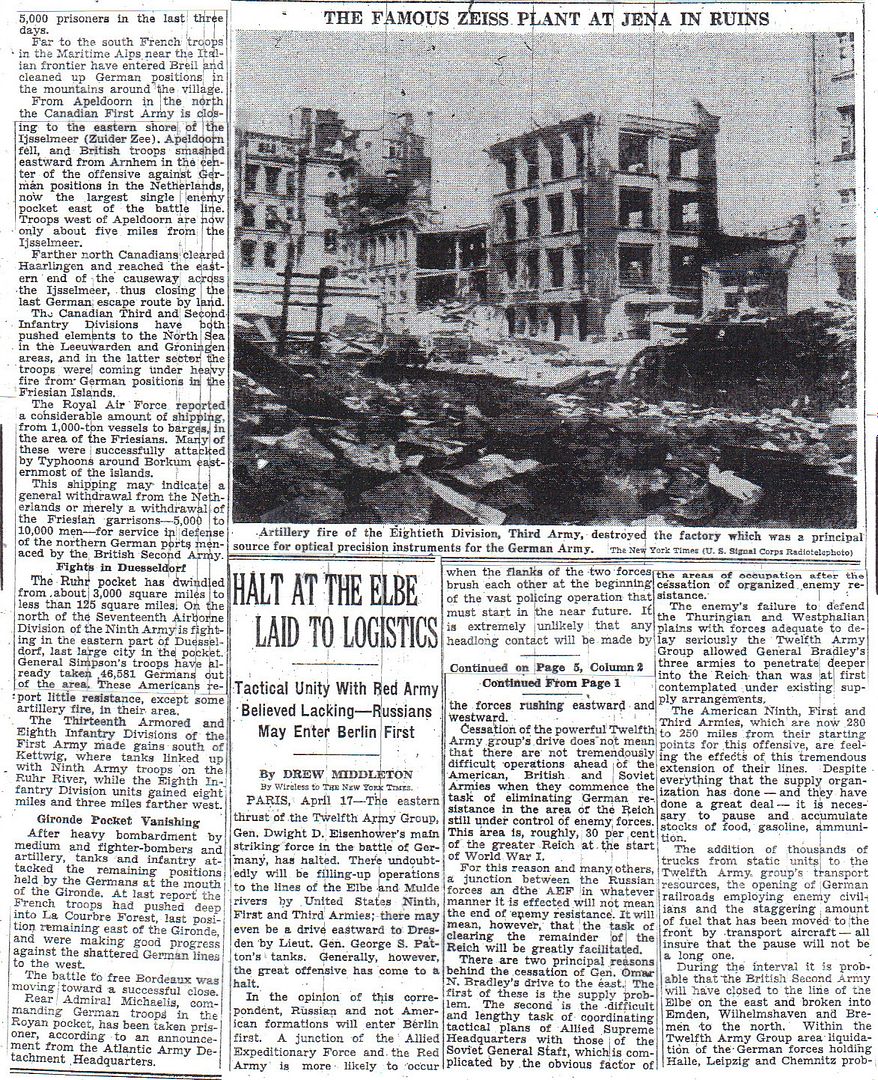
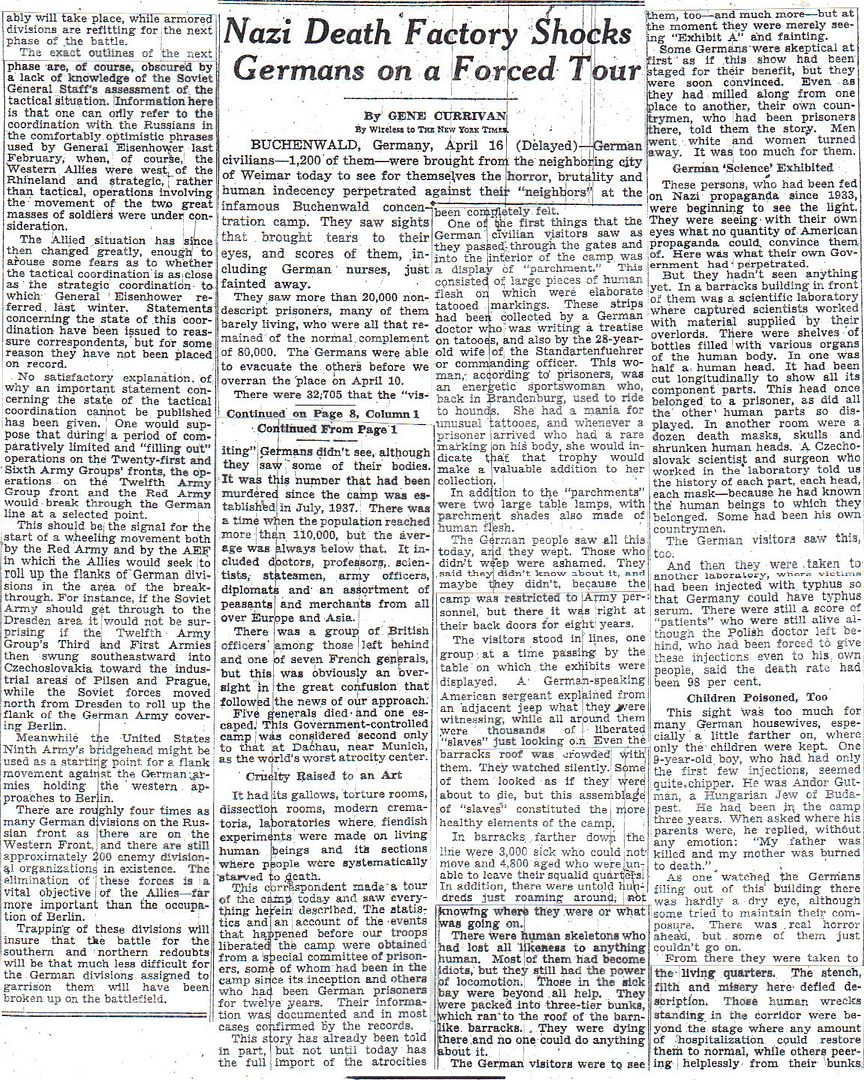

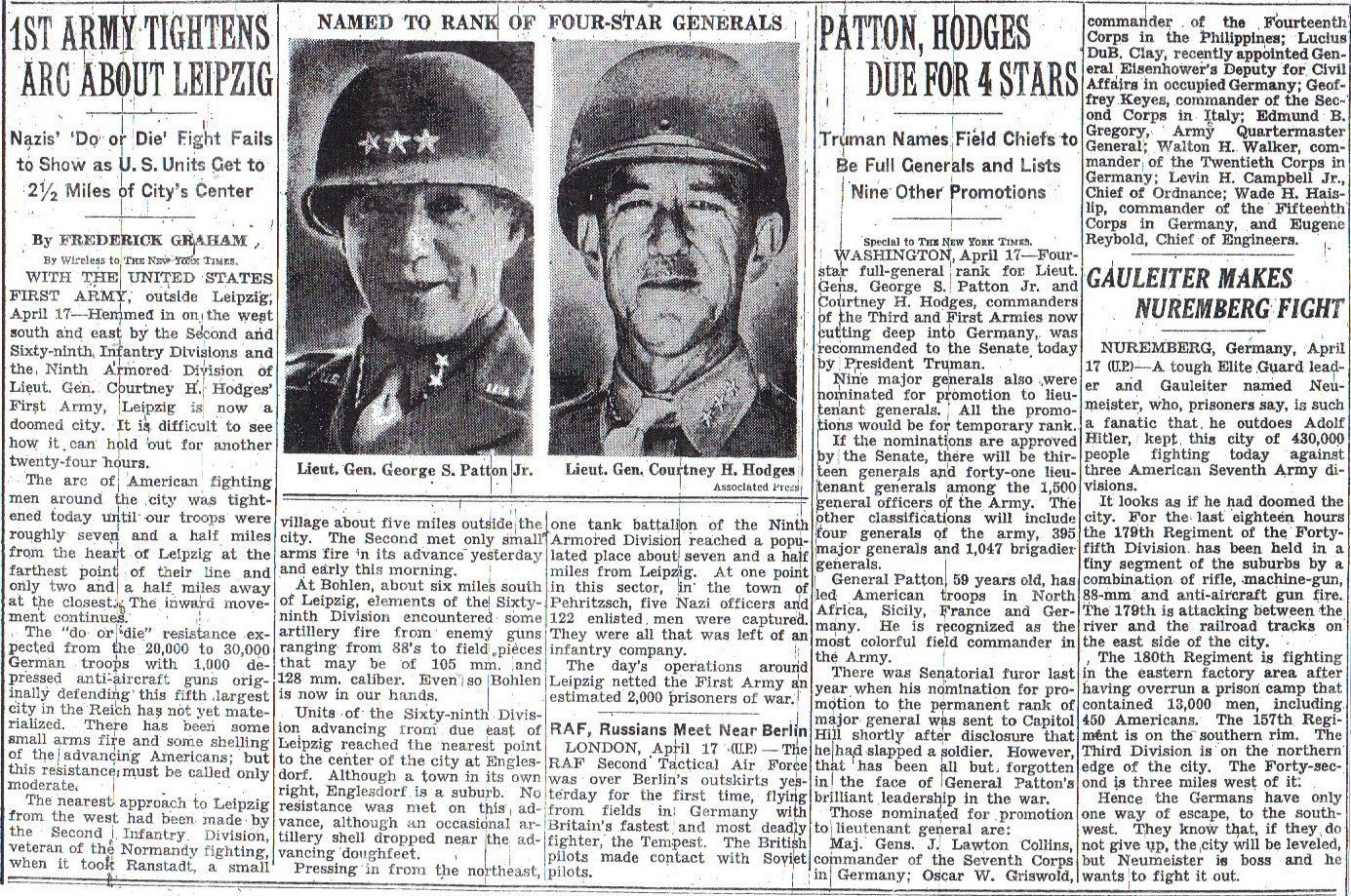
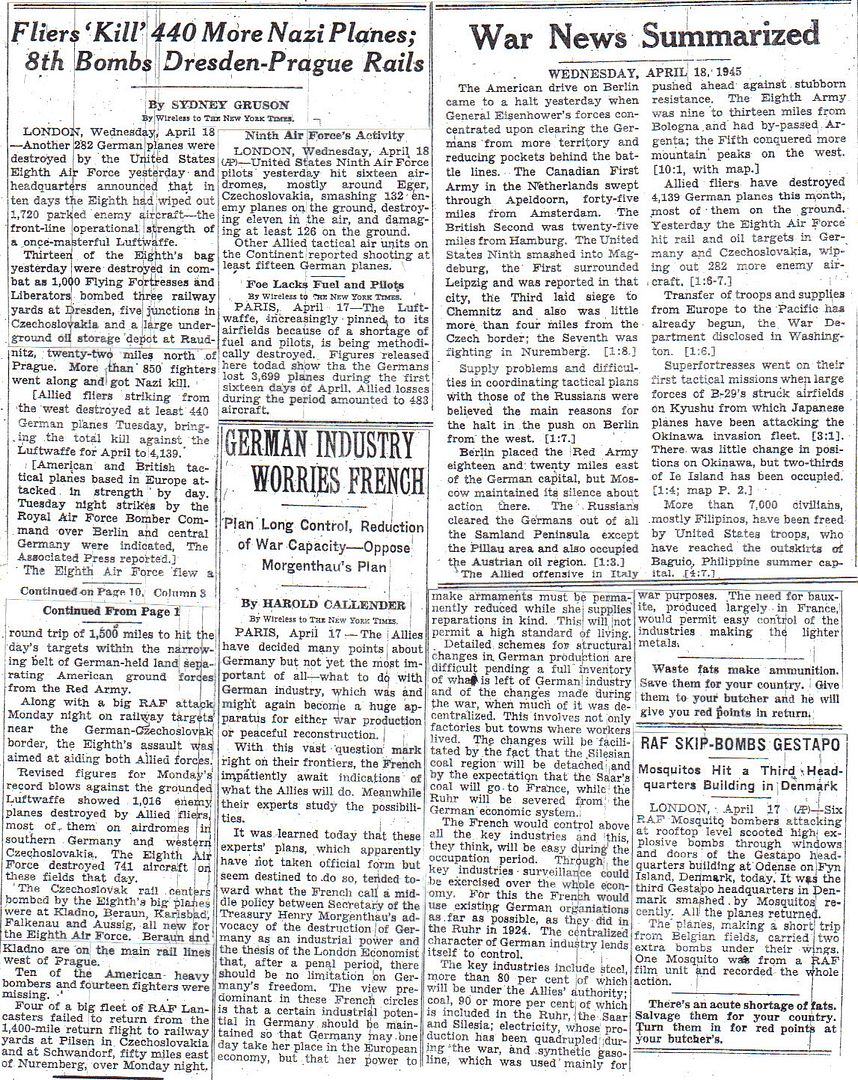
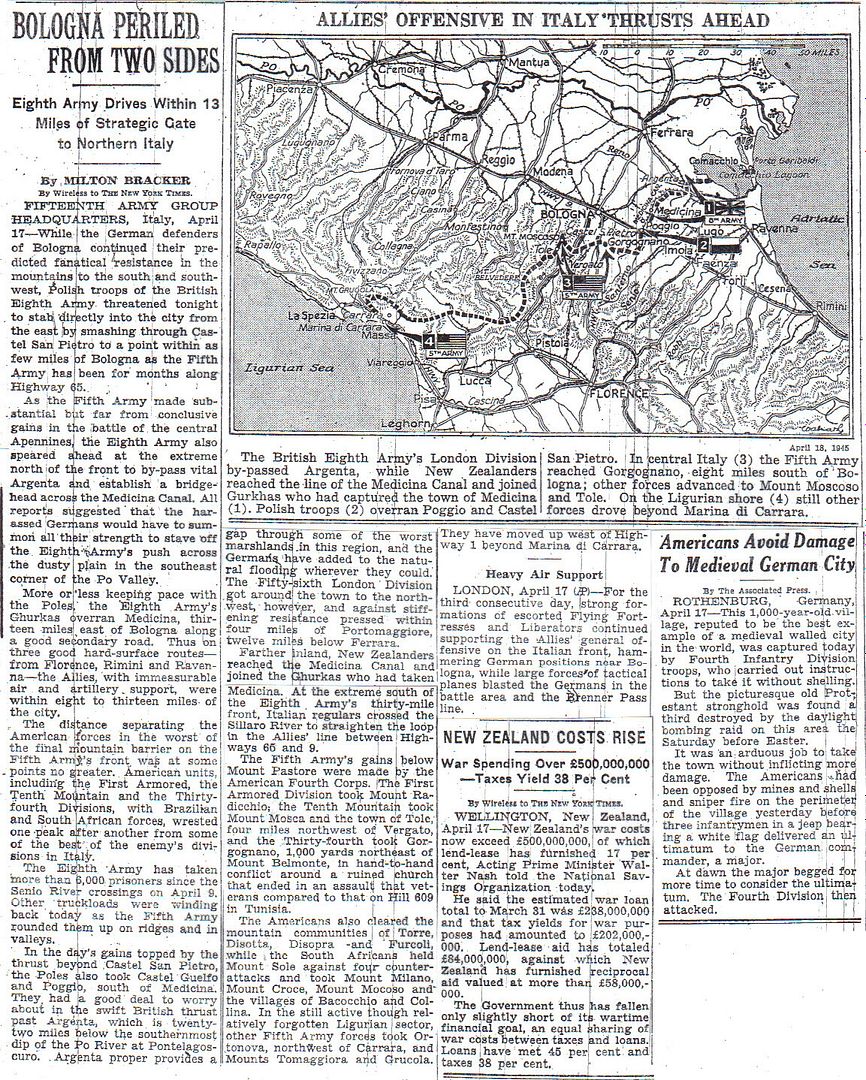
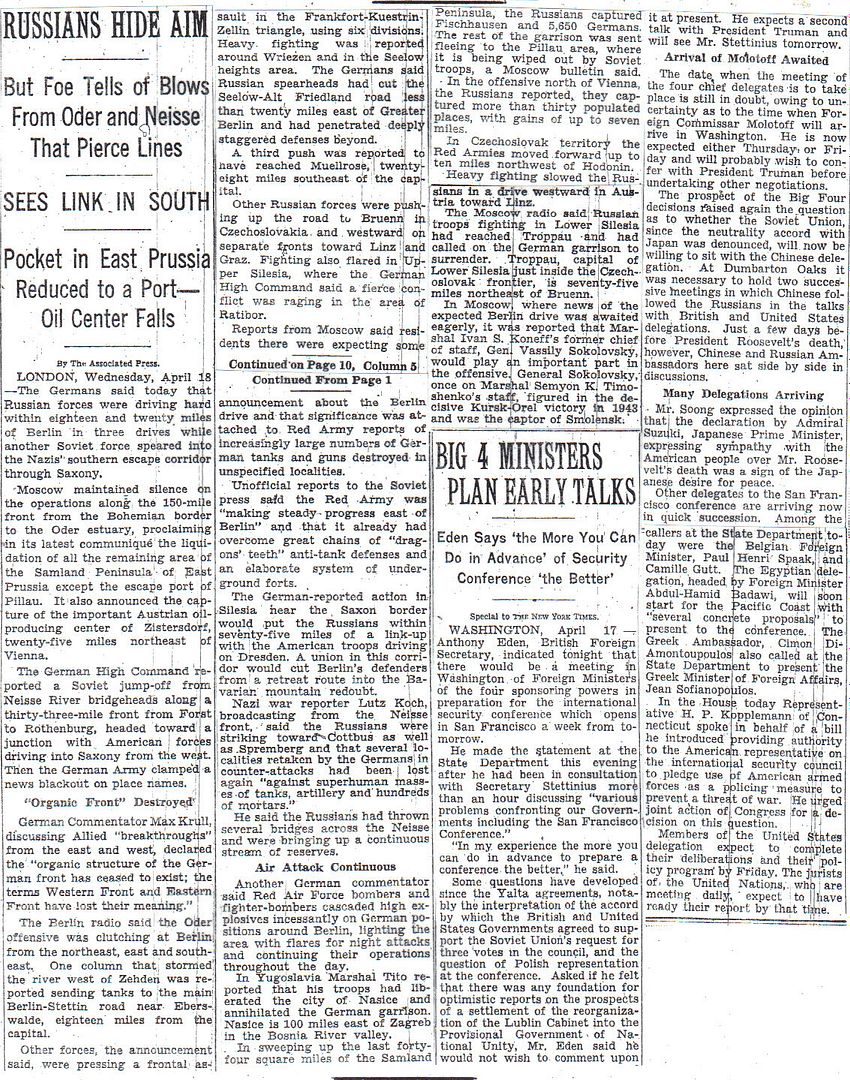
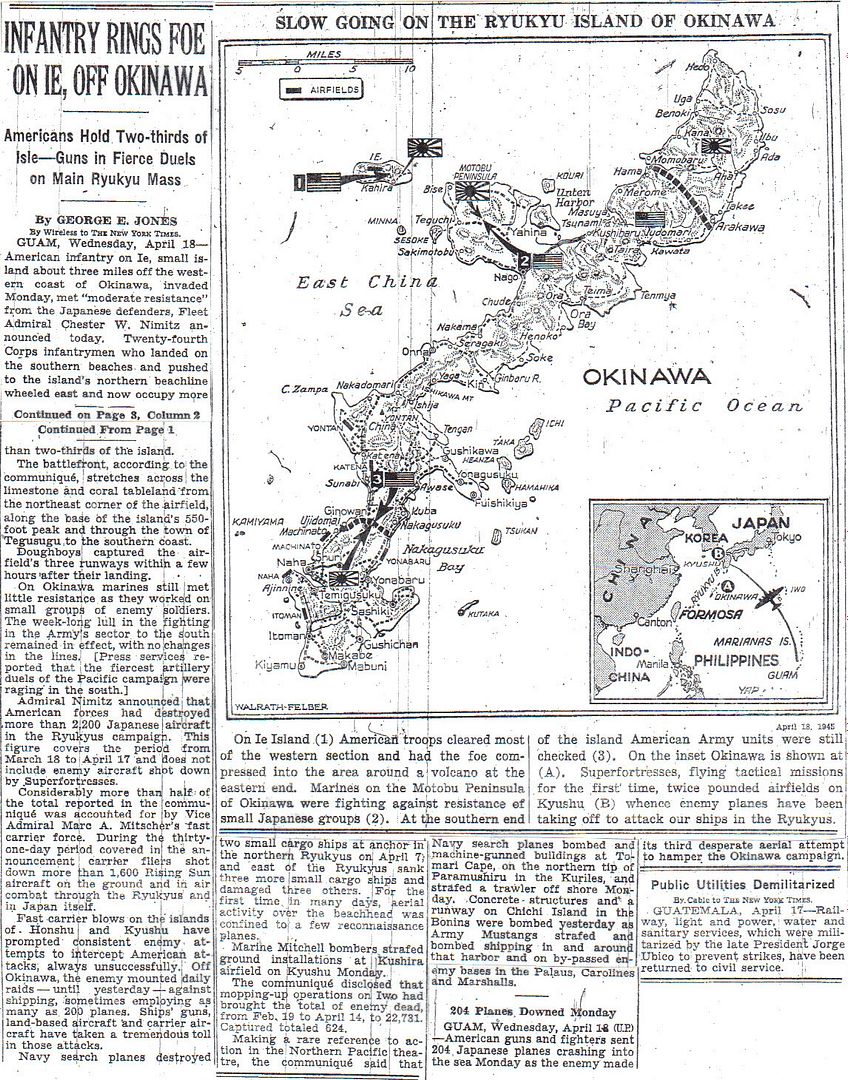
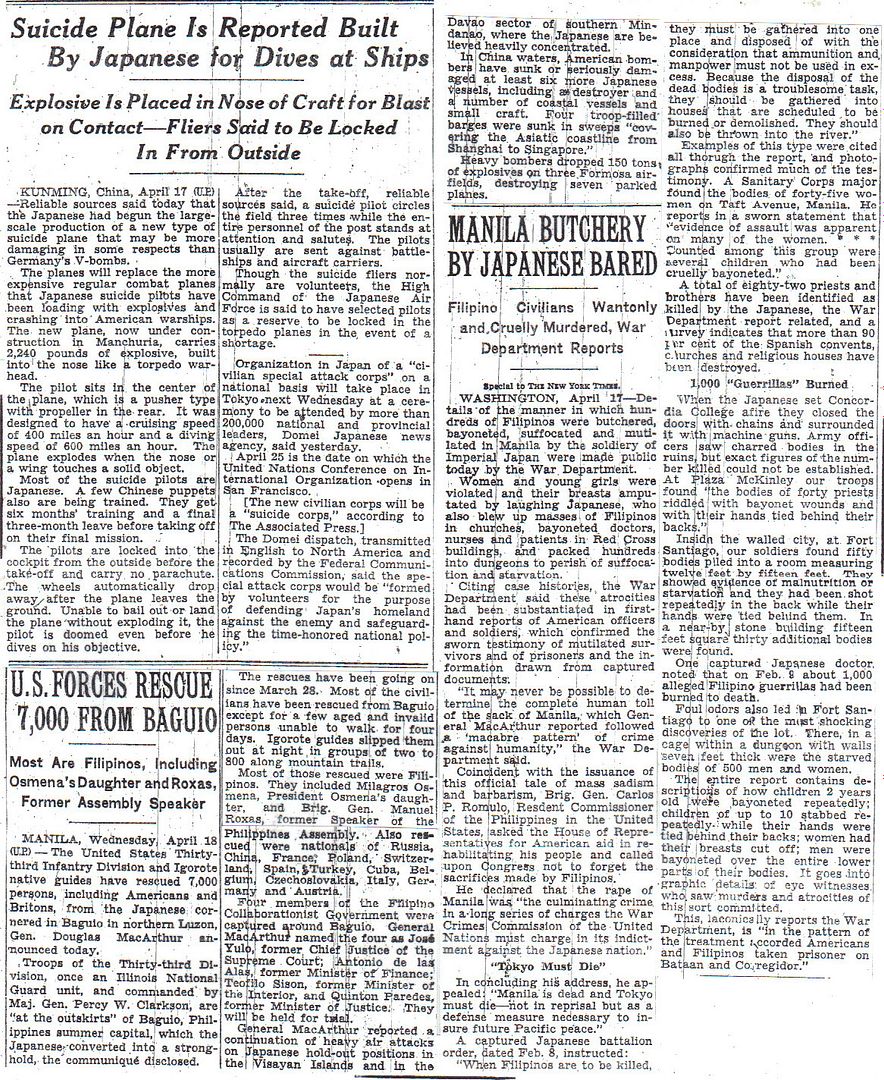
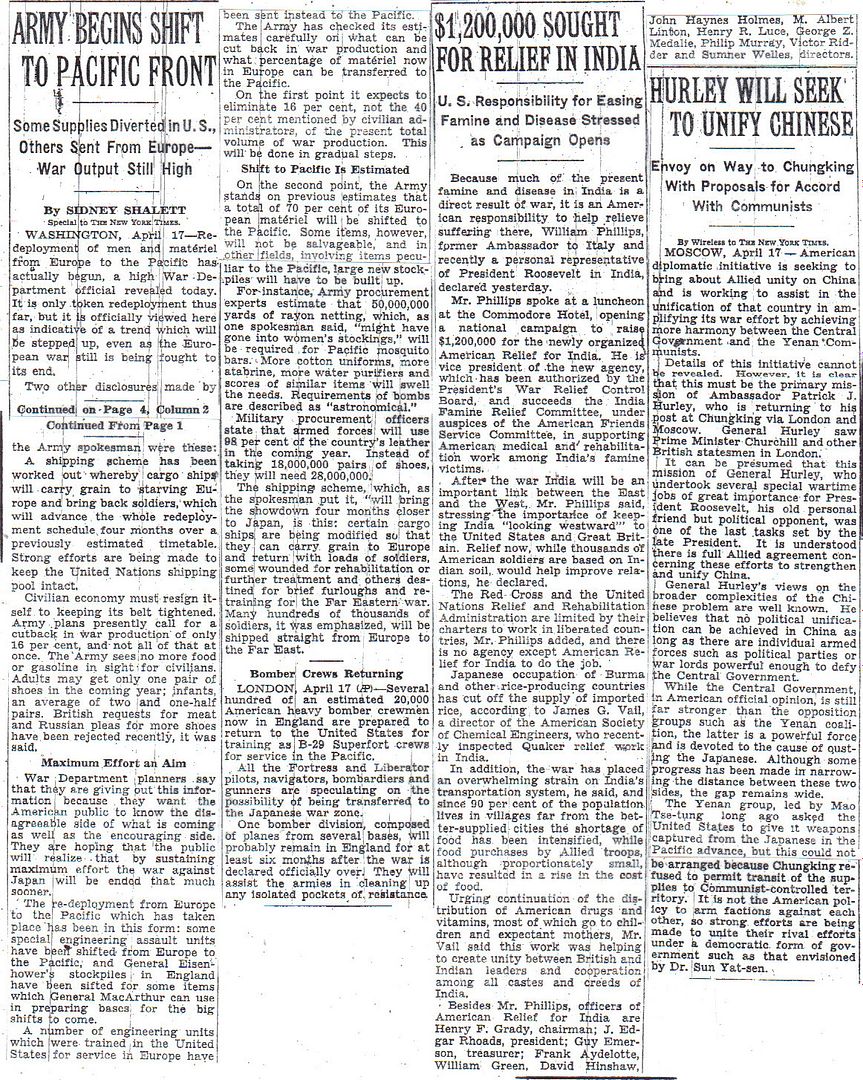
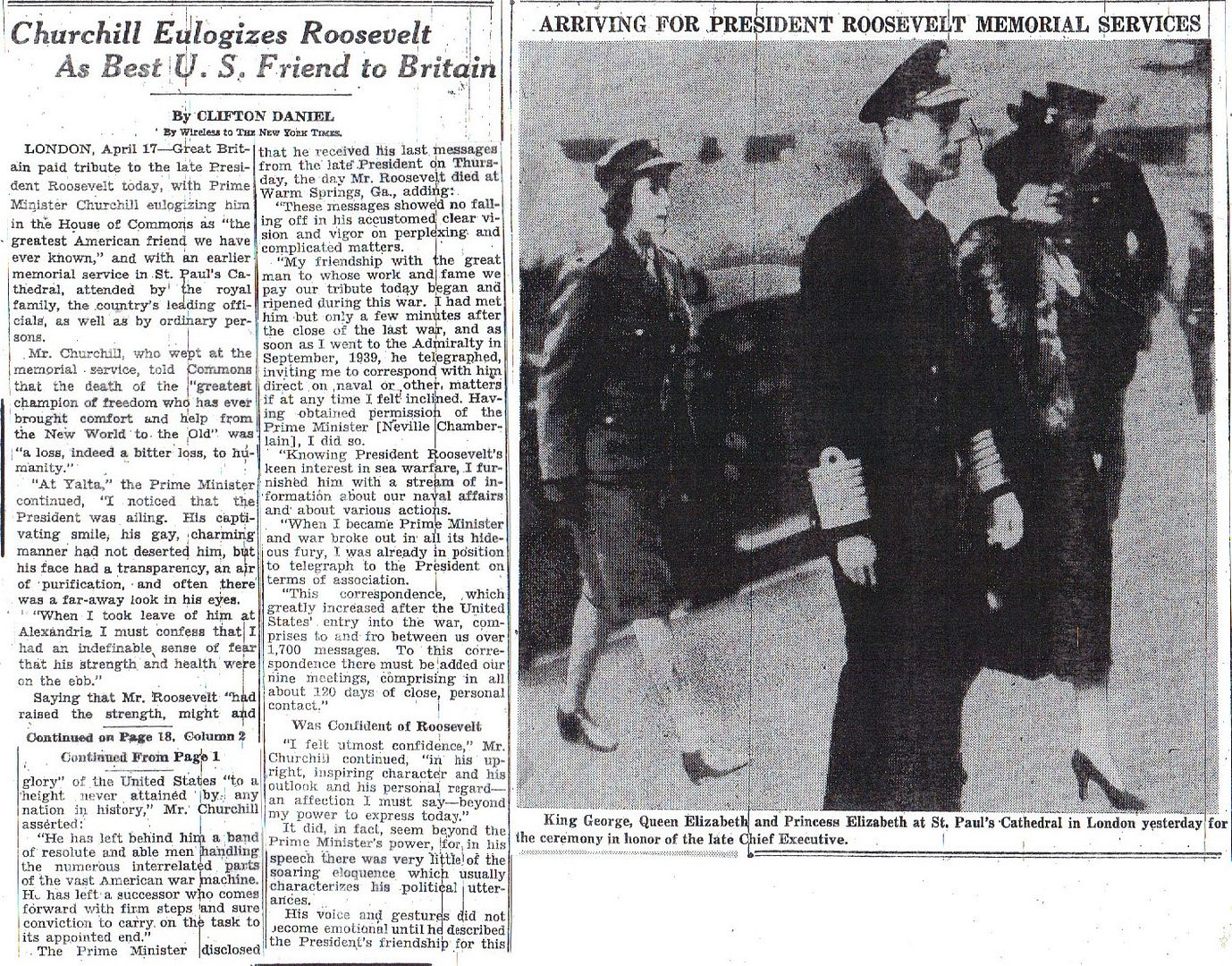
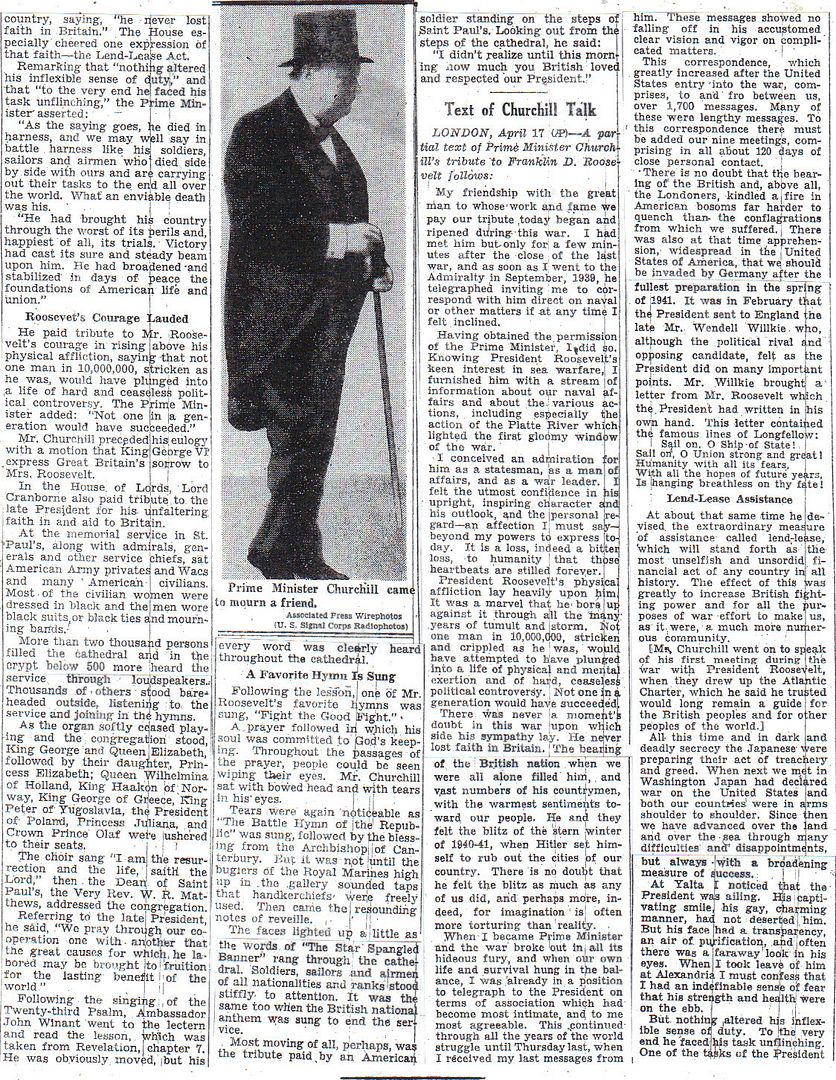

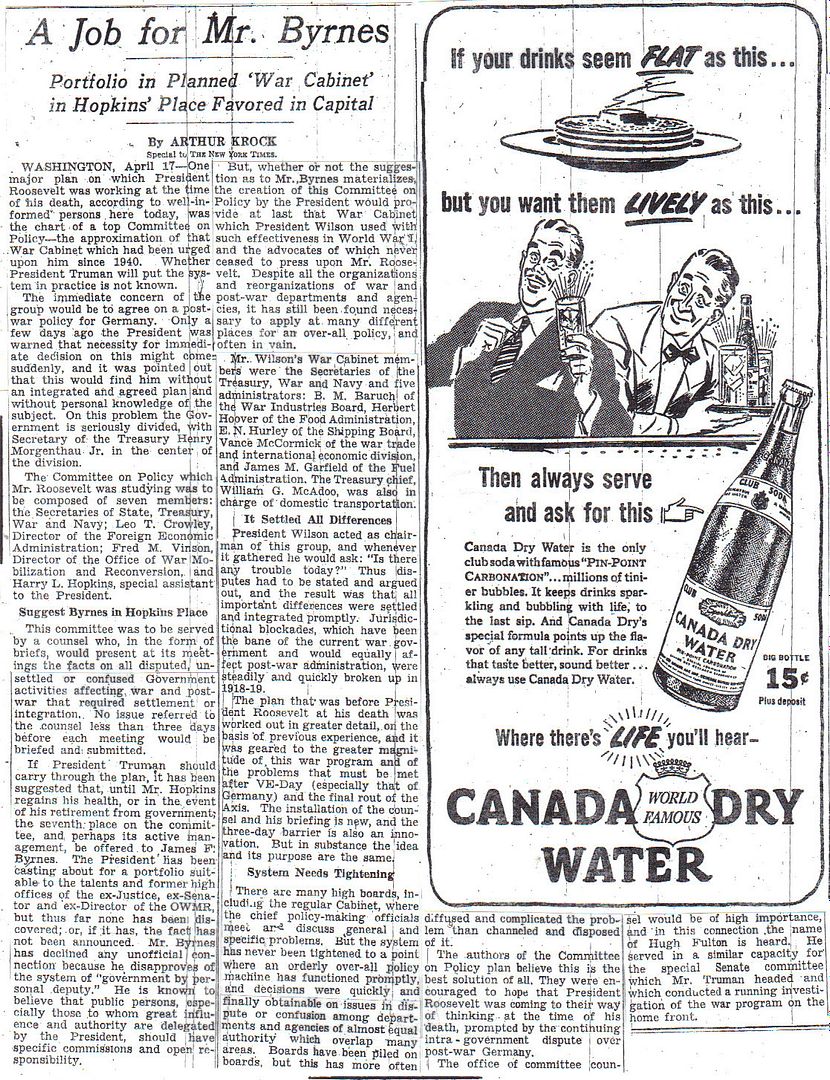

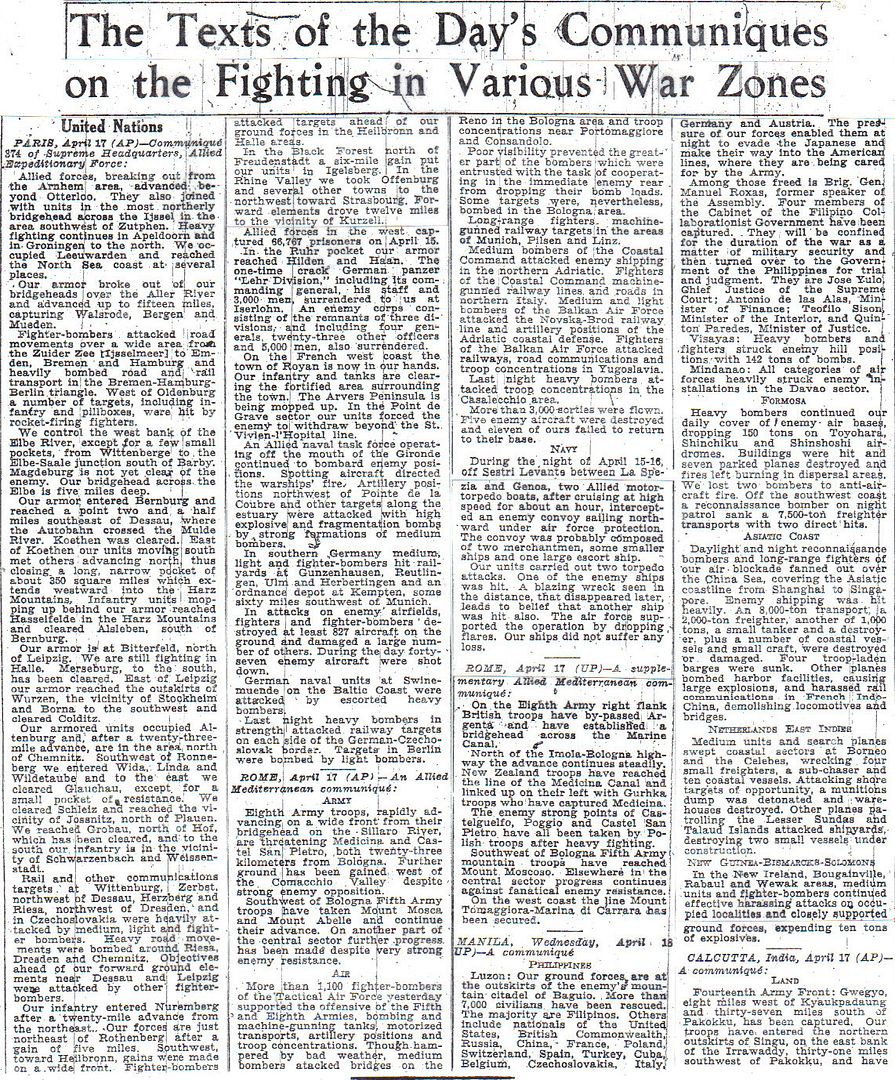
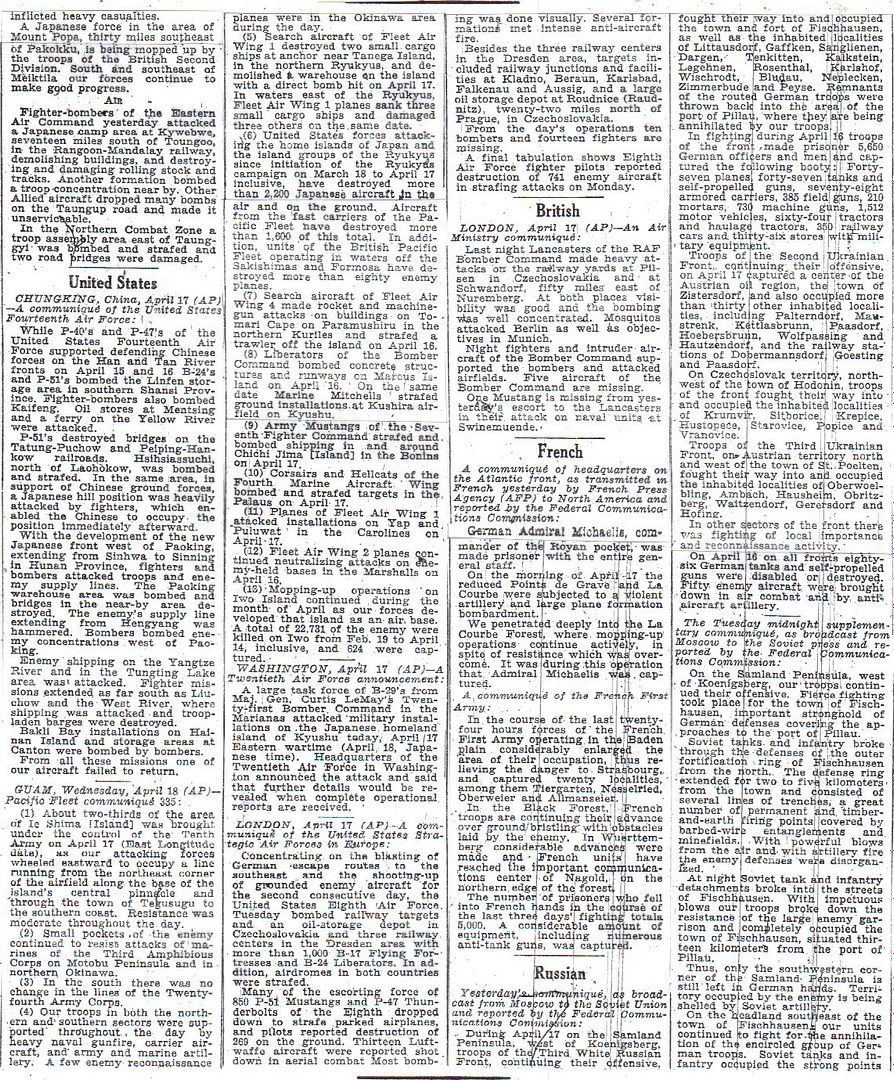

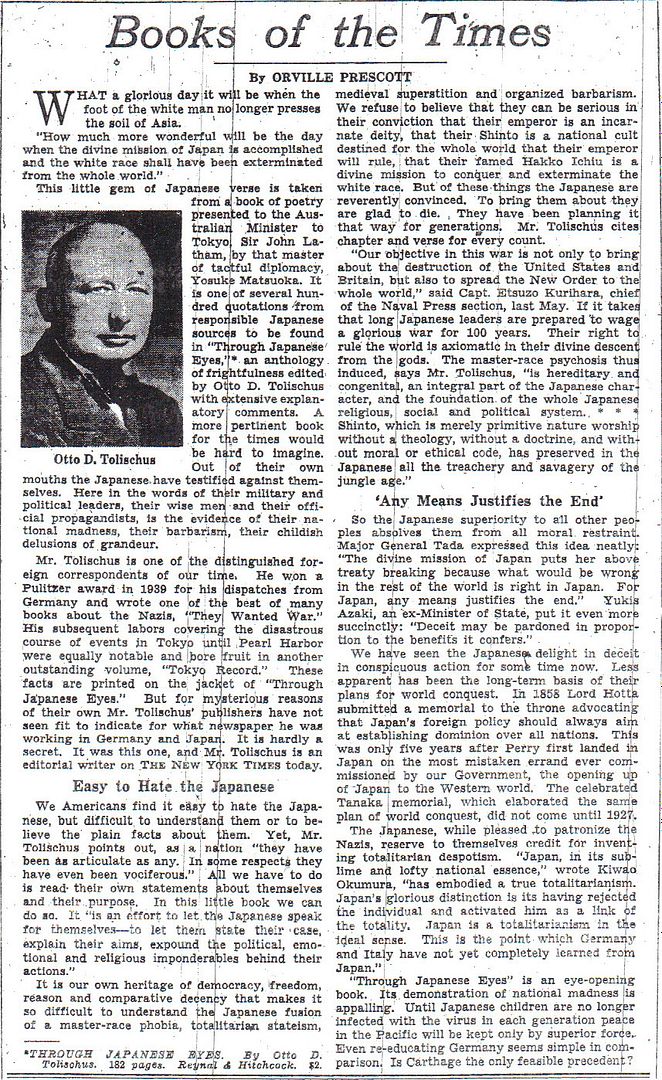
[April 18, 1945], HQ Twelfth Army Group situation map.
http://www.loc.gov/resource/g5701s.ict21318/
No more Rose pocket.
Very full Allied prisoner of war enclosures.
http://marshallfoundation.org/library/digital-archive/to-major-clifton-s-brown/
General George C. Marshall To Major Clifton S. Brown, April 18, 1945
1945
Publisher: The Johns Hopkins University Press
Date: April 18, 1945
Subject: World War II
Collection: Papers of George Catlett Marshall, Volume 5: The Finest Soldier
Summary
To Major Clifton S. Brown
April 18, 1945 Washington, D.C.
Dear Clifton,
I received a V-mail from you and have read a number of yours to your mother.1 You seem to be having an interesting time and I suppose with its moments of excitement.
Your mother is well, also Molly and the children. We hope to get down to Leesburg late this afternoon so that I can get in some of the later vegetables before it is too late. Henry has attended to the planting at Myer but it is rather difficult to manage it down at Leesburg.
I broke my rule about dinners last night and went to the British Embassy for a dinner of six, Anthony Eden being the reason. He is coming over this morning at 9:15 to hear the resume of the war situation before starting off for the meeting at San Francisco.2
I have ridden very little of late because I have gotten my exercise in field work or gotten no exercise at all. President Roosevelt’s death involved us in a great many formalities which took practically all our time for three days. The final interment at Hyde Park was very impressive particularly as there was a clear blue sky and all the spring blossoms were out. The West Point cadets made a picturesque background for the ceremony. I flew up, taking Admiral King with me, and we spent the night at West Point, flying back the next morning immediately after the services. We were supposed to go up on the special train but that would have been too time-consuming in view of the momentous happenings which have to be attended to almost from hour to hour.3
I hope the spring has found you in Germany and that the mud is drying up and you will soon be complaining about the dust.
With my love,
Affectionately,
Document Copy Text Source: Research File, Family Folder, George C. Marshall Research Library, Lexington, Virginia.
Document Format: Typed letter.
1. Marshall’s stepson’s message is not in the Marshall Papers.
2. British Secretary of State for Foreign Affairs Anthony Eden had attended President Roosevelt’s funeral service at the White House on April 14 and was preparing to attend the United Nations Conference on International Organization scheduled to convene in San Francisco on April 25. On April 18 Eden recorded: “Up early and motored with Edward [Halifax] to War Department where Marshall showed his maps and graphs. This is a function that takes place every morning and it is very well done by specially trained young staff officers. Better than any map room.” What interested Eden most was the chief of staff’s view of the Far East campaign. “Marshall’s stern report forecast a prolonged struggle in the Far East, if conventional weapons only were used. The sober reserve with which he recited his appraisal made it all the more disturbing. He was, I knew, no alarmist.” (The Reckoning: The Memoirs of Anthony Eden, Earl of Avon [Boston: Houghton Mifflin Company, 1965], pp. 610-14.)
3. For more information regarding President Roosevelt’s death, see editorial note #5-095, Papers of George Catlett Marshall [5: 141].
Recommended Citation: ThePapers of George Catlett Marshall, ed.Larry I. Bland and Sharon Ritenour Stevens(Lexington, Va.: The George C. Marshall Foundation, 1981- ). Electronic version based on The Papers of George Catlett Marshall, vol. 5, “The Finest Soldier,” January 1, 1945-January 7, 1947 (Baltimore and London: The Johns Hopkins University Press, 2003), pp. 150-151.
Digital Downloads
5-103.doc
Collection
Papers of George Catlett Marshall, Volume 5: The Finest Soldier
Ernie Pyle died 70 years ago today.
Yeah. A great loss.
http://www.ushmm.org/wlc/en/article.php?ModuleId=10006167
...During the fierce battle for Leipzig, the 69th Infantry Division uncovered Leipzig-Thekla, a subcamp of the Buchenwald concentration camp, on April 19, 1945. The camp had been established in September 1943 to supply labor for the German war effort. At its height, Leipzig-Thekla held approximately 1,400 prisoners.
On April 18, 1945, the SS guards had set fire to the barracks housing some 300 inmates and shot those who attempted to escape the flames. Upon arriving at the camp, the 69th immediately began providing for the 90 to 100 survivors. Days later, US Army Signal Corps photographers arrived at the site to document this atrocity. On April 28, 1945, a US Army Protestant chaplain reported that 325 male prisoners, who were too ill or weak to continue working for the German war effort, had been forced into oil-soaked barracks, which were then set aflame. Prisoners who attempted to escape the conflagration were shot by the guards or electrocuted on the electrified fences. According to the report, the swift advance of the 69th prevented the SS guards from committing a similar atrocity at a nearby camp housing some 250 women.
On April 24, the newly installed Allied military government in Leipzig ordered the local German mayor to provide 75 caskets for the dead prisoners, floral wreaths for each coffin, crews of workers to bury the inmates at the entrance of the town cemetery, and 100 prominent citizens from Leipzig, representing the “City Government, Clergy, Civic organizations, Chamber of Commerce, and Educational Institutions including the University of Leipzig to attend the funeral services” on April 27, 1945. That day, the US Army supervised the funeral, supplying Catholic, Jewish, and Protestant chaplains to perform the service. A guard of honor composed of survivors of the camp; 100 displaced persons bearing flags of the Netherlands, Belgium, France, the Soviet Union, Poland, and Czechoslovakia; Allied officers; and 1,000 German civilians attended the ceremony.
The 69th Infantry Division was recognized as a liberating unit by the US Army’s Center of Military History and the United States Holocaust Memorial Museum in 1993.
Casualty figures for the 69th Infantry Division, European theater of operations
Total battle casualties: 1,506
Total deaths in battle: 384
Division nickname
The 69th Infantry Division gained the nickname the “Fighting 69th” during World War II. The name has no heraldic significance, but simply conveys the esprit de corps of the division.
The aftermath to this is hilarious! After that snake Stettinius wrote this filibuster letter against the creation of Israel, when they actually did declare independence, Truman recognized them...
...eleven minutes later.
Famed columnist and war correspondent Ernie Pyle was killed on April 18, 1945, while covering the Battle of Okinawa. He can be seen spending time with members of the invasion force on board ship prior to the invasion of Okinawa, in this Universal Newsreel from April 9, 1945, filmed only weeks before his death.
The brief clip featuring Pyle begins at roughly 0:40 in the video below:
http://todaysdocument.tumblr.com/post/116723186548/ernie-pyle-8-3-1900-4-18-1945-famed-columnist
Awesome, ain’t it?
The State Dept. is still full of vipers.

Tanks of the 5th Canadian Division moving through Putten, April 18, 1945. (Library and Archives Canada PA-50417)
http://www.veterans.gc.ca/eng/remembrance/history/second-world-war/canada-netherlands
Thank you for the ping, and for the post.
Disclaimer: Opinions posted on Free Republic are those of the individual posters and do not necessarily represent the opinion of Free Republic or its management. All materials posted herein are protected by copyright law and the exemption for fair use of copyrighted works.